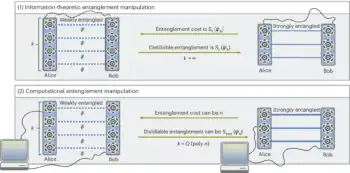Thomas Young's double-slit interference experiment - first performed in 1801 - is one of the most famous experiments in physics. In a traditional double-slit experiment light from a single source is split into two beams which propagate separately, before recombining to produce light and dark fringes. The fringes are due to the relative phases of the two beams: they are light when the beams interfere constructively and dark when the interference is destructive. Now Richard Dixon of Bristol University in the UK and colleagues from the Academia Sinica in Taiwan and Dalian University of Technology in China have demonstrated a chemical analogue of the double-slit experiment in a water molecule. The fringe pattern can be seen by splitting the water molecules with laser radiation and observing the energy levels of the resulting hydroxide ions (Science 285 1249).

Photons from the laser can excite electrons in the water molecules into a so-called anti-bonding state. Molecules in this state can adopt one of two distorted shapes, both of which can dissociate into a hydroxide radical and a hydrogen atom. However the two different shapes can result in the hydroxide radical being created in different rotational energy states. According to Dixon and colleagues, the water molecule is the equivalent of a photon, and the two geometries can be thought of as the slits in Young’s experiment. The quantum wave functions arising from the two dissociation routes interfere with one another, creating an interference pattern that can be observed in the distribution of the hydroxide radicals among their different rotational states.


